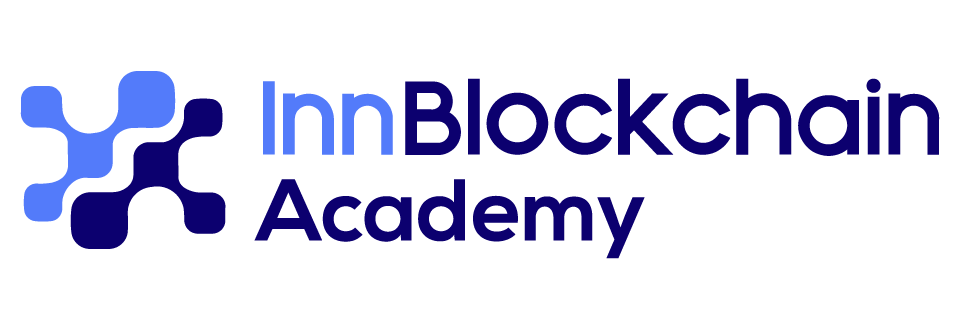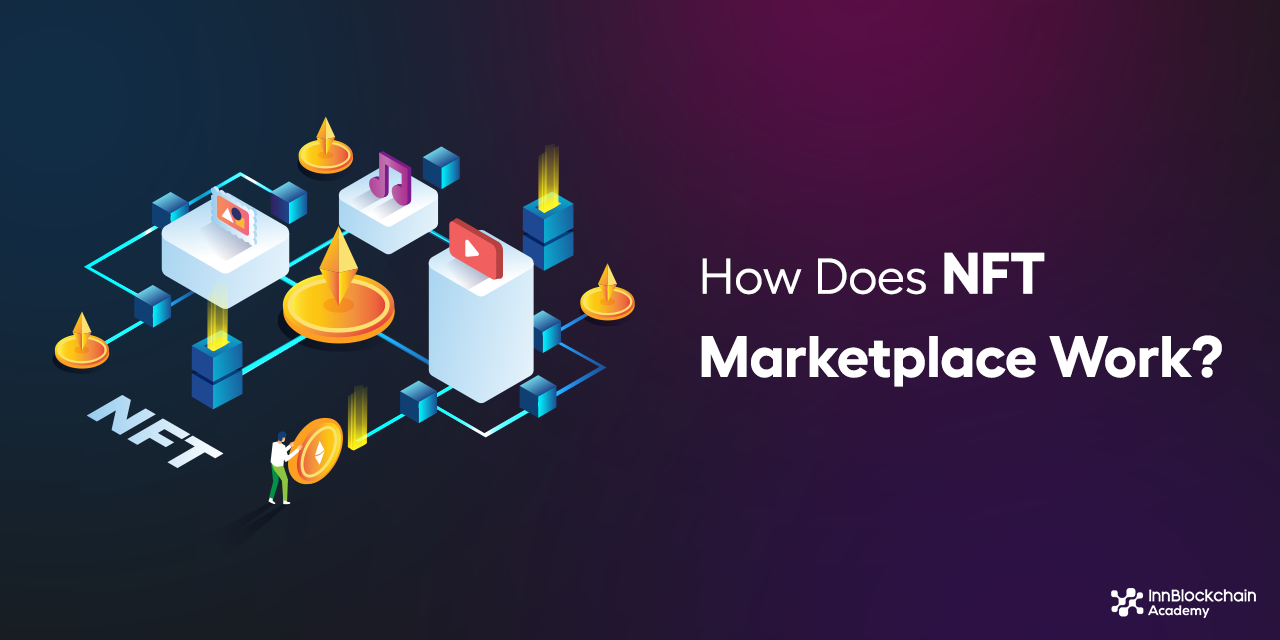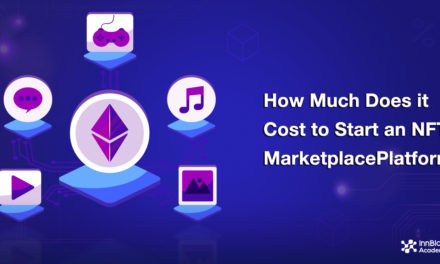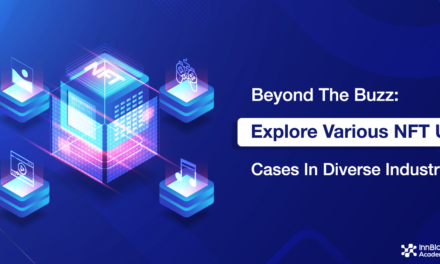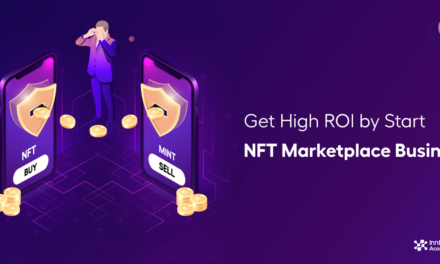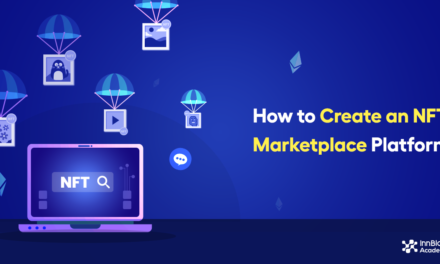Introduction
Here is the complete guide to how does NFT marketplace work? and complete the working function of the NFT marketplace.
NFTs have taken the world by blitz – once a trim movement associated with crypto, today, NFTs have become a global innovation where everyone wishes to be part of it. Most of them are interested to invest in NFTs, and some of them begin to create their own NFTs and mint them on the blockchain via NFT marketplaces like Rarible.
Are you one among them? Have an interest to know about the working function of the NFT marketplace. Then you are at the right place. Here you can learn about
- What is the NFT marketplace?
- What is the importance of an NFT marketplace?
- How does the NFT marketplace work?
Before diving into the NFT marketplace you must know what NFT is. Let’s take a quick insight into NFT.
Explanation of NFTs
NFT refers to Non-Fungible Tokens. It is a digital asset that is entirely unique and irreplaceable. For example, if you have an original version of Mona Lisa in the form of an NFT, and if your friends have a copy of Mona Lisa – probably you can’t swap this NFT like you exchange a dollar bill. The real version of the Mona Lisa NFT is unique and worth more than a copy of it, even though it looks the same. This is NFT – you can’t exchange, unlike the dollar.
Whenever you buy NFT, it is entrenched with a unique code that determines the owner of the product. This is the code that differentiates the original from the copies. It is non-fungible.
Hope you might have got an idea about NFT, now let’s step forward to know about the NFT marketplace
Overview of the NFT marketplace
Have you heard of people purchasing things like art pieces of Mona Lisa and games NFT like Axie Infinity?
Do you know where these things are purchased?
It’s none other than NFT Marketplace. An NFT marketplace is an online platform where collectors and creators can buy/sell NFTs. It functions as a public blockchain platform.
Nowadays, this platform gains the focus of developers and businesses to construct an NFT marketplace. How does it gain focus?
Importance of an NFT Marketplace
There are numerous factors why the NFT marketplace is very important in the digital landscape. Some of them are:
- The elevation of blockchain technologies has allowed various businesses and celebrities to create & customize their own NFTs.
- The popularity of collectibles and gaming has driven the need for more innovative NFT marketplace platforms.
- The increasing adoption of cryptocurrencies has
- The increasing adoption of digital currencies provoked the development of user-friendly and secure NFT platforms.
Most businesses peek to take benefits provided by NFTs. It is clear that the need for an NFT marketplace would persist to grow in the upcoming years.
So, when there is a dramatic turnaround for NFTs then why not develop an NFT marketplace?
Hey, Listen! Whether you are a well-established organization, startup, or crypto enthusiast, the NFT marketplace is something you must think about.
Before beginning to create the NFT marketplace. It is a must to know how the NFT marketplace works. Because having clear knowledge will guide you on the right path of marketplace creation.
Let’s look into the working steps of the NFT marketplace
How does the NFT Marketplace work?

Connect Wallet to NFT Platform
Linking your crypto wallet to any NFT marketplace is simply an easy and convenient task. It is just a couple of clicks if you log in as a registered user in that marketplace. Linking a wallet to an NFT marketplace involves the process of connecting your digital wallet, which holds crypto funds to that NFT marketplace. This facilitates the users to buy, sell, and trade NFTs on the platform. NFTs are unique digital assets that are stored on the blockchain and are traded using a crypto wallet. In order to interact with an NFT platform, users must have a compatible wallet that can hold and transfer the necessary cryptocurrency.
The process of connecting a wallet to an NFT platform usually involves providing the wallet’s public address to the platform. This address is used to identify the user and to enable them to interact with the NFTs on the platform. Once your wallet is connected to the platform, you can view your NFT holdings, make purchases, and manage NFT collections directly from your wallet. This streamlined process provides a secure and efficient way to transact in the NFT market, which has become increasingly popular in recent years.
Let me share with you the steps on how to link your wallet with the NFT marketplace
- Choose your preferred NFT marketplace
- Navigate to the “connect wallet” page – click on the “Connect Wallet” button.
- From the list of wallet options, select the wallet you want to connect to the NFT marketplace.
- Authorize the connection between your wallet and the NFT marketplace. This usually involves signing a message or approving a transaction in your wallet.
That’s it! These basic steps help you to connect your wallet to an NFT marketplace and start buying or selling NFTs. Next, let’s see how to fund the wallet.
Funding your wallet
Process of adding cryptocurrencies, such as Bitcoin, Ethereum, or other altcoins, to your cryptocurrency wallet. This allows you to use the cryptocurrency to make purchases, including buying NFTs on an NFT marketplace.
When you fund your wallet, you typically transfer cryptocurrency from any exchange or another wallet to your own wallet. This requires you to have a cryptocurrency wallet address, which you can obtain from your wallet provider.
The process for funding your wallet may vary depending on the wallet provider that you prefer to use to transfer cryptocurrency. It typically involves sending the cryptocurrency to your wallet address, which may involve entering the wallet address and other details, such as transaction fees and confirmation times. Make sure to follow any specific instructions provided by your wallet provider are followed.
Upload the File You Want to Turn into NFT
Generally, NFTs are pieces of digital art. This may be an audio, video, image, and more. The ultimate goal is to create a unique piece of digital media that you can sell like a painting at an art gallery.
Whether you are a collector, artist, entrepreneur, musician, or company, you can create your own NFT on your preferred NFT marketplace.
In the previous section, we saw how to connect the wallet to the NFT marketplace. Once the wallet is connected creating an NFT is quite straightforward. Let’s see how
- Select the “Create” option: This brings up a menu for the NFT creation process, including an upload section, NFT features, properties, and blockchain.
- Upload your media file: The file may be art, music, video, or anything else. You can upload or link directly to an externally hosted media file.
- Fill in the details: Name the NFT and describe it. Here you can add unique properties along with your NFTs.
- Select your blockchain: This is the place where your NFT resides, and it can’t be altered once minted.
- Create the NFT: Once you filled in the details of your NFT, then simply click “create”.
After hitting “Create,” your file uploads automatically and the NFT would be created. But to list NFT for sale, you have to mint NFT on the blockchain. To do so let’s see how to mint NFT on the blockchain……
NFT Minting

Minting an NFT – Process of uploading the digital assets with the parameters such as NFTs ID, name, description, owner, number of copies, price, etc, and also recording ownership of that asset on a blockchain.
The process of minting an NFT charges a percentage of fees by the blockchain platform like Ethereum, BNB, etc. Once the NFT is minted, it is stored and distributed across on decentralized platform, where it can be sold, bought, or traded like any other asset.
By minting you can just gain ownership, store, and distribute your NFT across the decentralized platform. But if you want to sell NFTs then you have to list your NFTs on the marketplace.
Now you may have the question, how to list NFTs? let’s discuss this in the upcoming section.
NFT Listing
Listing is the process of putting NFTs up for sale or auction on an NFT marketplace like OpenSea, Rarible, SuperRare, etc. Once NFT is listed for sale, the buyer can view information about NFT including its price, name, and description. Listed NFTs can be anything from a unique piece of artwork to virtual real estate property. Listed NFTs are unique digital assets that are stored on the blockchain that can not be duplicated or replicated.
By listing NFTs for sale, the owner could sell their digital assets to investors or collectors who value them. Once listed, you can promote your NFTs via forums, social media, and other channels to attract potential buyers.
Auction
An auction is a public sale where items are sold to the highest bidder. In the context of NFTs, an auction allows the owner of an NFT to set a starting price and a duration for bidding, and then interested buyers can bid on the NFT by offering a higher price than the current highest bid. At the end of the auction, the highest bidder wins the NFT and is obligated to pay the final bid price.
Auctions can be a way for NFT creators and owners to sell their digital assets for a potentially higher price than they would receive through a fixed-price listing. They can also create a sense of urgency and competition among buyers, which may drive up the final price.
Few NFT marketplaces allow for both fixed-price listings and auctions, while others focus exclusively on auctions. In some cases, an auction is a sealed bid auction, where bidders submit their bids in a sealed envelope. Auctions can be timed, with a specific end time, or open-ended, with the auction continuing until no more bids are received.
NFT Selling
At first look, you might think it is complicated to sell an NFT. After making research you will think the process is not so bad. Just make sure your focus is on the platform, auction setting, and payment-based issues like gateways and fees. Once you have covered the base, then you are on the way to selling NFTs.
NFT selling means the process of selling an NFT from one to another person in a marketplace for payment. Before beginning to sell your NFT you have to make sure that your NFT is minted and listed on the blockchain, a public ledger.
After listing, you have to wait for a buyer to purchase it. Some marketplace platform facilitates the seller to set a minimum price or accepts bids from the buyer or immediate purchase.
Once the buyer purchased the NFT, then the seller has to transfer ownership of a digital asset to the buyer. This is performed via a blockchain platform or NFT marketplace where the seller listed their NFTs.
After the transfer of ownership, the seller will receive the payment for its sold NFT. The payment may be done in Fiat or cryptocurrencies based on the marketplace.
Before stepping into a marketplace one must have a clear idea about what are all the fees charged by the marketplace. The marketplace charges fees for each and every activity taking place on the marketplace.
Hope you might have gained knowledge about the complete working of the NFT marketplace platform. Though you are going to create your own NFT marketplace with the help of an NFT marketplace development company. As an admin depth knowledge about the working of the NFT marketplace platform will help you achieve success in your business.
Conclusion
If you are an innovator peeking for a new doorway to How to start NFT marketplace business?, this realm of the crypto world is worth exploring as it opens a new entry for monetizing your talents.
Frequently Asked Questions
How to mint an NFT?
The following are a few steps to mint NFTs, they are
- create asset
- Select the appropriate NFT marketplace
- Connect your wallet to the marketplace.
- Upload your asset with the relevant pieces of information.
- Pay the gas fees to finish the minting process.
How to buy an NFT?
Users could browse the marketplace to know about the availability of NFTs for sale. Once the user chooses the NFTs they can place a bid or choose the “Buy now” option, based on the marketplace’s feature. The ownership of NFT is transferred automatically to the buyer’s wallet once the transaction is completed.
Are there any fees associated with the NFT marketplace?
Yes, the NFT marketplace charge fees for the maintenance of the platform. These fees include listing fees, transaction fees, and additional fees that may be charged by a few marketplaces for their services.
If all the NFT marketplaces have the same features?
No, different NFT marketplaces have different features, UI, supported blockchain, and communities. So it is important to research and knows about the fees, and terms & condition of a marketplace before engaging in transactions.
